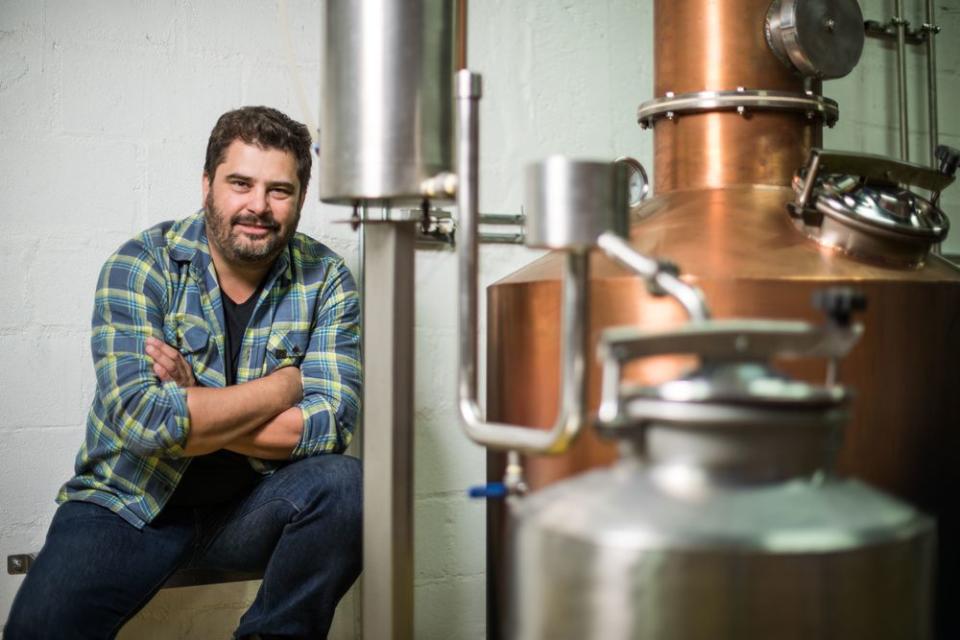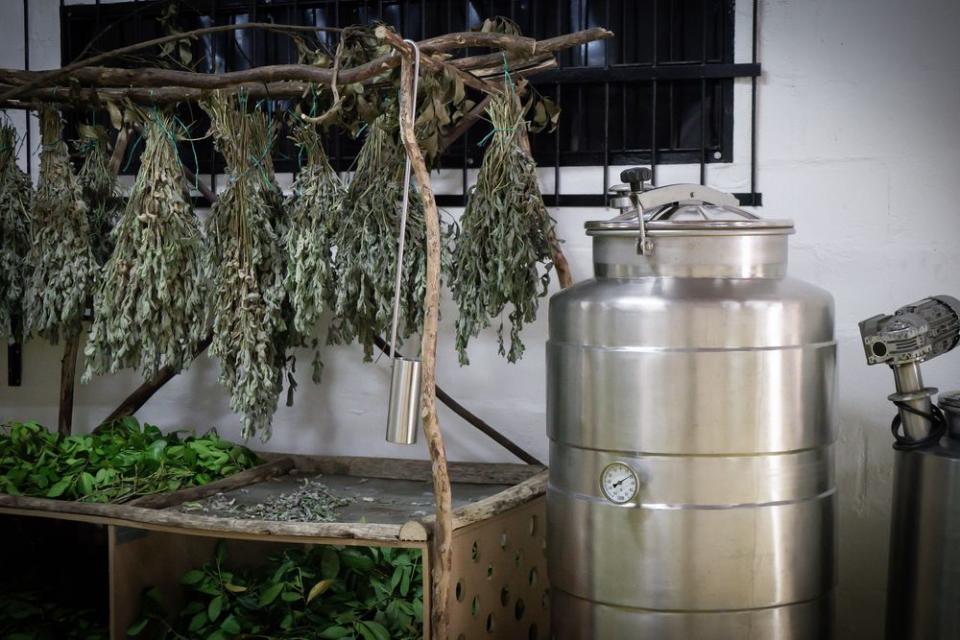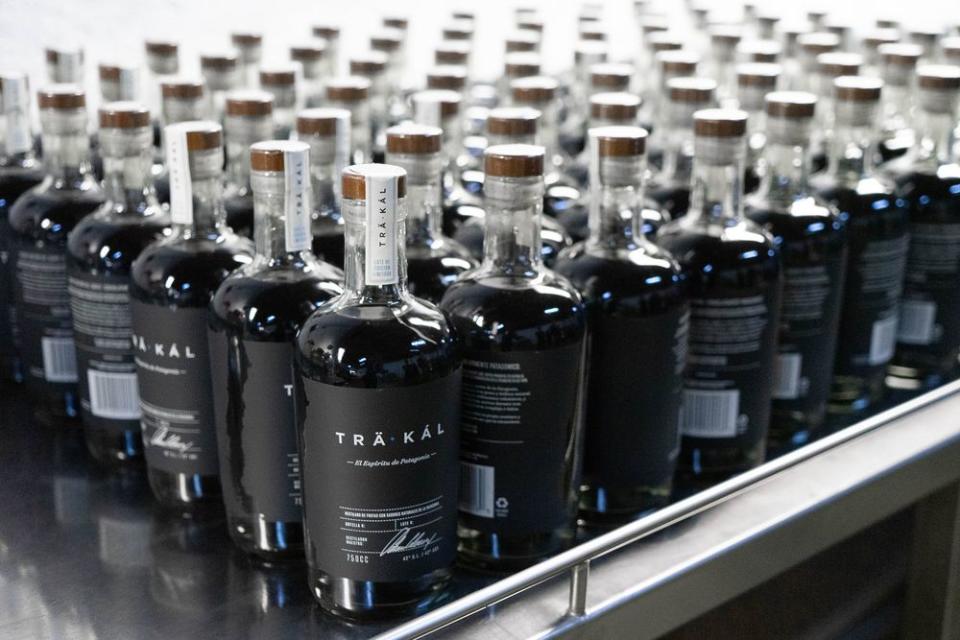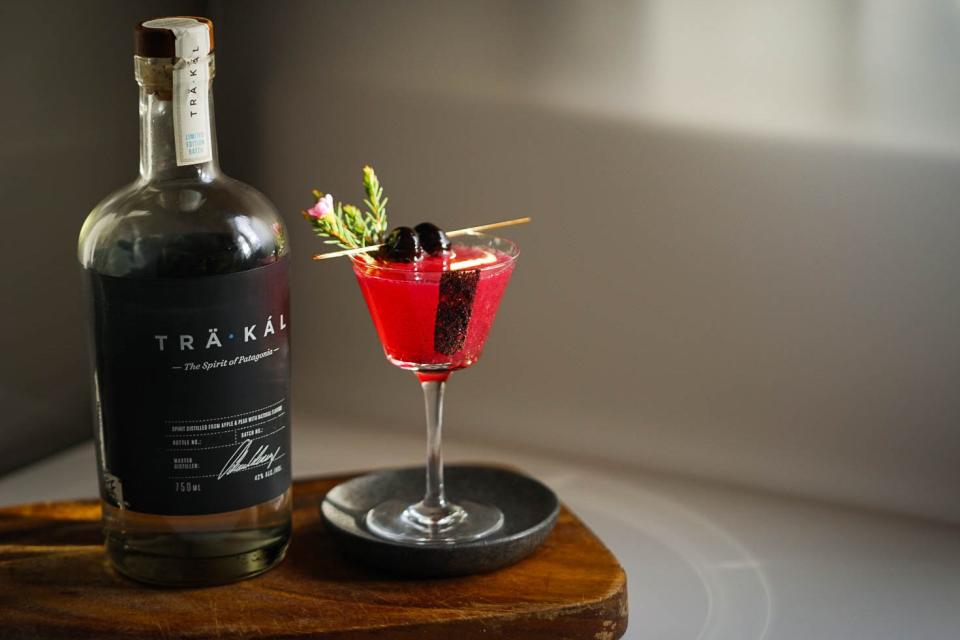Patagonian Spirit Träkál Wants to Become America's Next Bartender Favorite
Naturally-distilled spirits are often the results of uniting together ingredients of a particular region. In many places, there’s a tradition of creating an identity through the delicious act of drink making. That’s why Sebastian Gomez found it so confusing Chilean Patagonia, an area renowned for its natural landscape, was lacking a liquid identity the bar community could enjoy—glacier water for hangovers excluded.
The founder and master distiller of Träkál, Gomez’s work is a reminder the real Patagonia is a place where authentic locally made products are still being introduced to the global marketplace. While Träkál is currently available in eight states as of this article, its production and entry into the U.S. market signifies consumers are embracing the idea of something completely unheard of before.
So, what can you expect to taste when trying Träkál for the first time? “I like to say Träkál is what happens when brandy and gin have a baby in Patagonia,” says Ben Long, the distillery’s co-founder.

The clear spirit is 42% alcohol by volume or 84 proof, and is distilled three times. Beginning with local apple and pear varieties to create a base, the spirit then distills four different types of locally grown berries for its body, with seven wild herbs and essential oils added for the final round. In distillation, the quality of ingredients is obviously very important, but so too is the equipment that’s used. Gomez used pot stills made from Patagonian copper and steel, embodying the idea that a locally made spirit could be forged in a part of the world that had escaped the global bar community.
“Because of the use of the essential oils, I had to readapt and rebuild the original designs to accommodate their use. The most important thing for me is the flavor,” says Gomez, who took over two years to fine tune his equipment and production methods. The result is a drinking experience that like its surroundings, bases itself on natural beauty. Expect to drag your tongue through the Andean forests, picking up the flavor of berries and an herb you think is anise, but in reality, it’s called tepa. That unidentifiable aftertaste is precisely the point of venturing out to try a new spirit, as well as the key to Träkál establishing its own section on the shelves of liquor stores.
Crossing Borders
When it comes to spirits, making what’s inside the bottle is only half of the process. Before any alcoholic product can receive approval for sale in the United States, its label must be approved by the Alcohol and Tobacco Tax and Trade Trade Bureau. Commonly referred to as the TTB, this government agency is the authority on what labels can and cannot state. The TTB’s decisions have a tremendous impact on a product’s brand identity and the way it chooses to market itself to industry professionals and consumers alike.

So, how does that work? According to the TTB’s 2018 Fiscal Report:
undefined
Träkál, which was classified by the TTB as a “spirit distilled from apples and pears with natural flavors,” according to Long, hasn’t been the only spirit based out of South America to seek approval for its own classification in the past few years. Director Steven Soderbergh’s side hustle, the Bolivian-born Singani 63, previously tested the organization’s labeling system.
While there is much room to grow, bartenders and beverage directors from cities including Denver and Atlanta have found Träkál to be a memorable addition to their arsenal.“It has structure, acidity, great mouthfeel and layers of flavor both familiar and new,” says McClain Hedges, beverage director of RiNo Yacht Club in Denver. “For me, it’s a cross between great eau de vie and gin; it has the versatility to play well in anything from aperitifs to spirit forward boozy cocktails like Martinis and even Old Fashioneds.”

The home of the Rocky Mountains was the first to experience Träkál, a logical launch point due to its mix of outdoor lifestyle and Denver’s inviting cocktail scene. However, it’s unique flavor and versatility in both cocktails and mixed drinks caught on quickly. “When it comes to träkál, we find simple sours like a daiquiri build works really well,” says Kellie Thorn, beverage director of Hugh Acheson Restaurants, including Atlanta’s Empire State South. “It’s really compatible with apple and pear flavors, and one of my favorite applications was essentially a negroni riff with the addition of chocolate bitters, so a Träkál right hand.”
The endorsement of Träkál by hospitality professionals who are serious about what goes into their cocktails reveals the potential for widespread appeal. Most importantly, it’s helping Chile embrace and expand the recognition of its homegrown cocktail scene. However, anyone looking for a replication of Kentucky’s bourbon trail should prepare to get their hands dirty.
In addition to Colorado and Georgia, Träkál is available in California, Arizona, Nevada, Oklahoma, New York, and Illinois. The company is expanding its availability in the United States along with making plans to enter the European market before the end of this year, beginning in Berlin.
More must-read stories from Fortune:
—Acclaimed chef Thomas Keller on fine dining and eating local
—A tequila sommelier on how to drink Mexico’s favorite spirit
—Meet the data-obsessed collector tracking million-dollar whiskies
—A guide to the food and wine capital of South Africa
—Craft cocktails on Vancouver Island, Canada go beyond “drink local”
Follow Fortune on Flipboard to stay up-to-date on the latest news and analysis.


